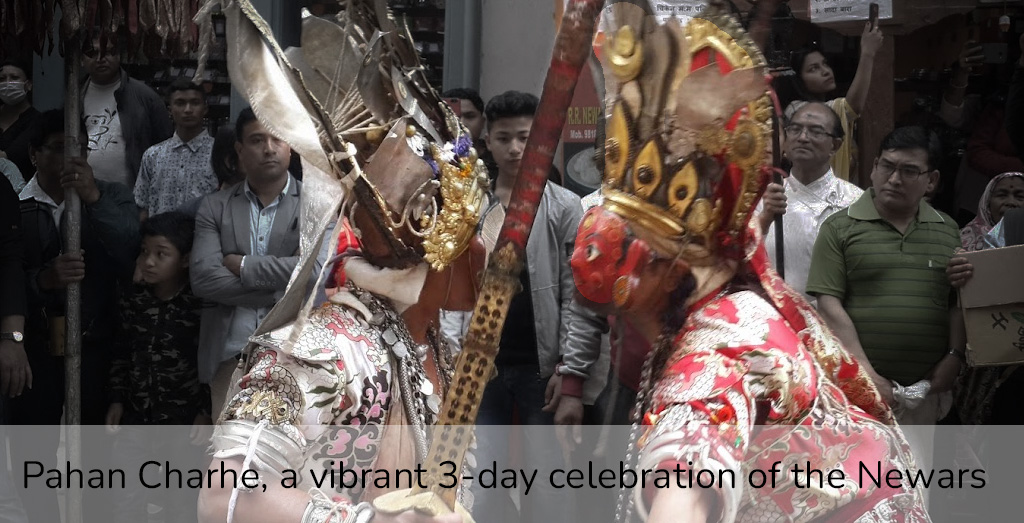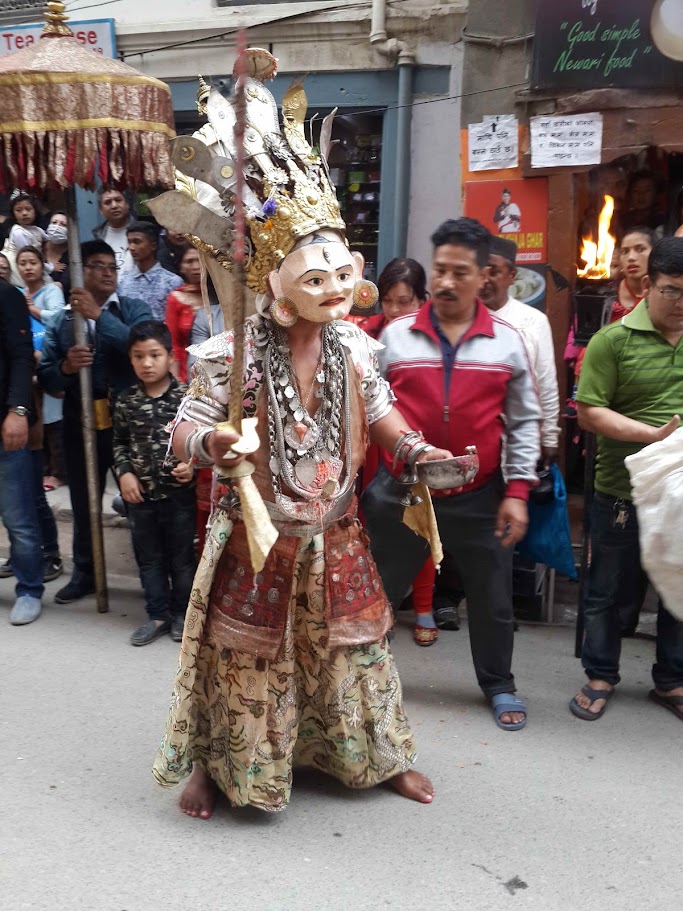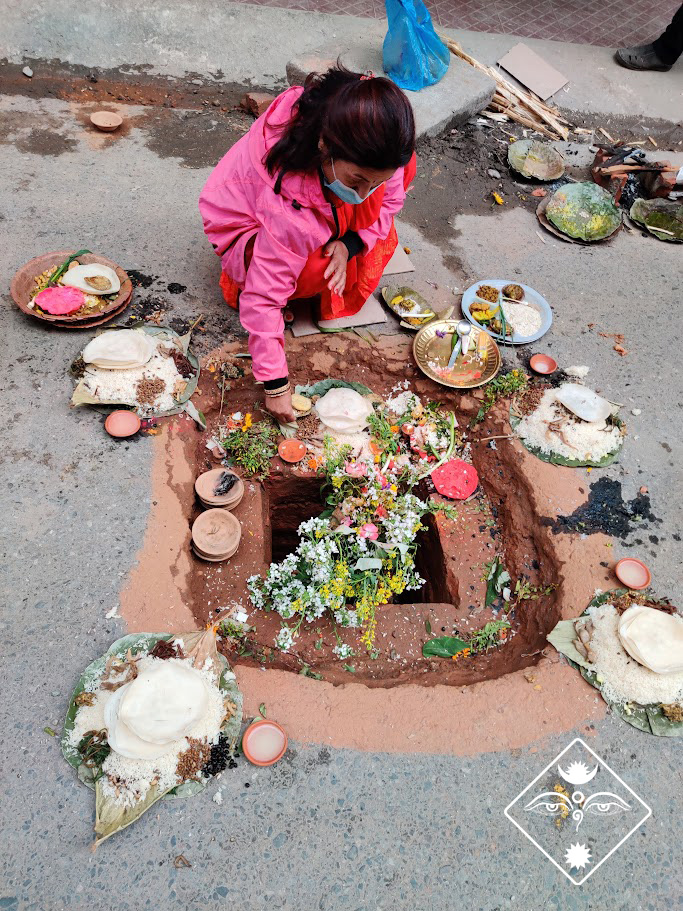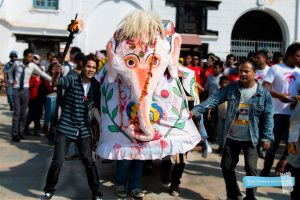
Pahan Charhe, or Paha Charhe, or Pahachare is a vibrant three-day celebration of the Newars in Nepal, particularly in the Kathmandu Valley. The name of the celebration translates as “inviting guests,” and it refers to the tradition of inviting relatives and friends to share celebratory food and communal activities.
Origins and Significance
While the exact origin of Pahan Charhe is unknown, it has been celebrated for centuries and holds deep cultural and religious significance. Some believe that it originated in prehistoric tribal rituals associated with the arrival of spring and the necessity of pleasing gods for a bountiful harvest. Over time, the festival evolved, incorporating elements of Hinduism and Buddhism, forming a syncretic cultural tradition and religious practice.
Day One: Worship and Masked Dances

The festival begins on the fourteenth day of the dark fortnight in the month of Chaitra (March-April). On this day, families perform rituals to worship Luku Mahadyah, an incarnation of Lord Shiva worshipped in a hole in the ground, typically in a secluded corner. The offerings are typically meat, wine, and seasonal flowers like rape and radish flowers, symbolizing gold and silver, respectively. During the evening, Nyatamaru Ajimā Pyākhan, or Swetkali Dance, is performed in Kathmandu’s Nyata ward. It is a masked dance ritual where different deities are represented by the dancers and continues throughout the entire night, recounting traditional tale-telling in dance.
Day Two: Processions and Horse Races
The second day is the horse festival of Ghode Jatra. The chief attraction is the Dyah Lwākegu ritual at Tundikhel parade ground in Kathmandu, where temporary tents of the Ajimā mother goddesses are brought together. The palanquin of each community’s respective deity is carried ahead by their musical bands, finishing up at a grand assembly at Tundikhel. There, the attendants pass on flaming torches among themselves, symbolizing the union of the goddesses. At the same time, horse racing and other events organised by the Nepal Army are organized, adding to the festive atmosphere.
Day Three: Community Feasts and Final Gatherings
The last day sees the coming together of three Ajimā mother goddesses’ palanquins—Lumadhi Ajimā, Kanga Ajimā, and Tebāhā Ajimā—at Asan’s marketplace. The processions, led by musical bands, take varying routes to converge at Asan. Red, blue, and yellow caps, representing their neighborhoods, respectively, are worn by participants as they exchange flaming torches during the Dyah Lwākegu ceremony. From the roofs of the houses surrounding the square, rice flatbreads known as chatānmari are rained down on the palanquins, adding to the festive mood. The day is centered around family relationships, with families inviting relatives and friends home to share festive meals of traditional Newari cuisine.
Culinary Delights and Cultural Observances
Food takes central stage during Pahan Charhe celebrations. Families prepare a variety of traditional Newari dishes, including Kwati (sprouted lentil soup), Bara (fried lentil patties), and other items with seasonal vegetables and fried fish. Such food traditions not only offer a gastronomic delight but also serve to strengthen communal and family ties.
Experiencing Pahan Charhe

For visitors who wish to see Pahan Charhe, observing the colorful processions, masked dances, and horse races provides an idea about Newar culture and traditions. Participating in community feasts and engaging with local communities during the festival is an excellent way to experience the rich cultural heritage of the Kathmandu Valley.
Pahan Charhe exemplifies the Newar community’s dedication to preserving their cultural heritage, fostering community bonds, and celebrating life through intricate rituals, performances, and culinary traditions.



